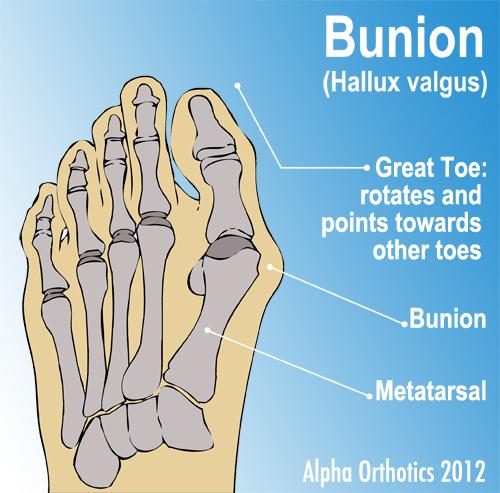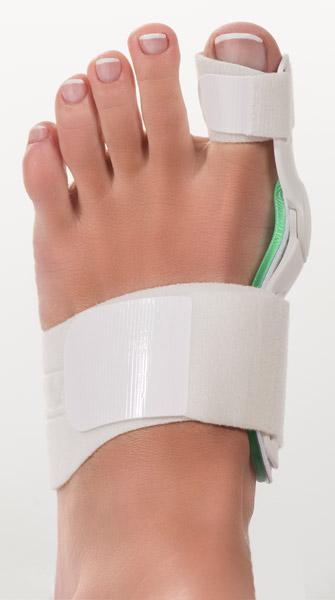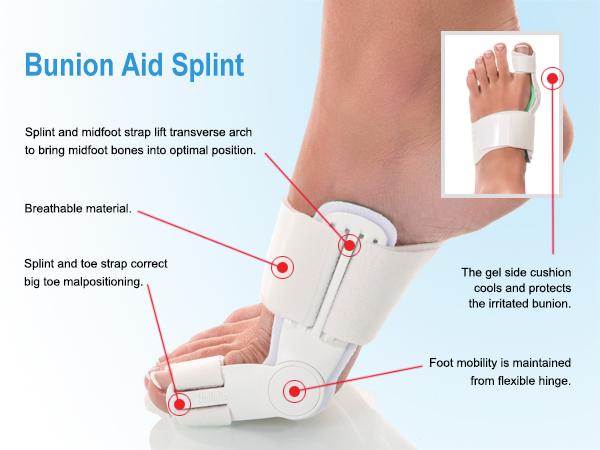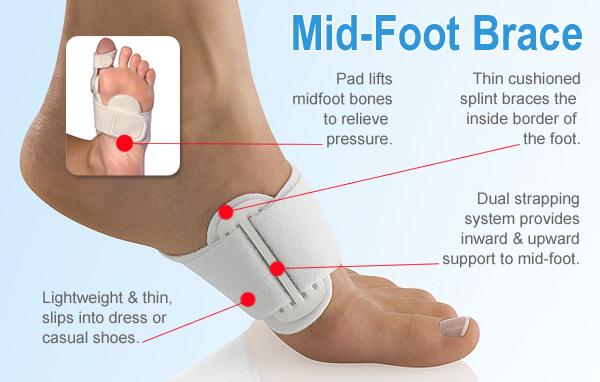Knowing how bunions develop is helpful in selecting the appropriate bunion treatment. In general, most bunion deformities are a result of foot structure and function which are genetic.
As the heel strikes the ground when walking, the joints of the foot unlock and absorb impact. Referred to as pronation, the arch collapses causing the feet to flatten. This flattening causes excessive tension of the tendon in the upper mid-foot that enables the big toe to bend upward. The tendon contracts which then forces the big toe to be pulled laterally toward the second toe.
Early Signs of a Bunion include:
It can take many years for a bunion to develop, and especially to the point of pain. One can have a bunion but not yet experience any bunion pain. Conversely, one can suffer from bunion pain without having a severe deformity.
- Early movement of the big toe towards the smaller toes
- Bump on the base joint of the big toe
- Deep dull “in the joint” pain
- Pain on top or side of the big toe from shoe pressure

Bunion Pain
No matter what stage your bunion is in, you can be in pain. Though bunions take years to develop, you can experience pain at any stage. Some people don’t have bunion pain at all. Pain from a bunion can be severe enough to keep you from walking comfortably in normal shoes. The skin and deeper tissue around the bunion also may become swollen or inflamed.
How to Reduce and Treat Bunion Pain
- A hinged flexible bunion splint, such as Bunion Aid® can relieve pain by providing corrective arch support and releasing tension away from the inflamed joint
- Change shoes! Avoid flip flops, high-heels and shoes with pointed, narrow toe-boxes
- Medicine will not prevent or cure bunions. However, the use of over the counter anti- inflammatory medications can help
- Bunion splints, pads and arch supports can help redistribute weight and move pressure away from the big toe

Early Symptoms of Bunions

- Movement of the big toe towards the smaller toes
- Bulging bump on the outside of the base of the big toe
- Restricted movement of the big toe
- Swelling, inflammation, redness or soreness around your big toe joint
- Persistent or sporadic dull, sharp or aching pain in or around the big toe
- Corns, blisters and calluses which can develop when the first and second toes overlap
- Over time, more severe symptoms can occur such as arthritis of the big toe, stress fractures and problems walking
How to Treat a Mild to Moderate Bunion
A bunion treatment must address the underlying cause of the deformity,
not just the bump (bunion) itself but also the functions of the foot:
- The up and down motion of the longitudinal arches in the foot (B-C, A-C)
- The sideways motion of the transverse arch (A-B)
Bunion Aid effectively treats this underlying foot function while straightening the big toe because:
- The mid-foot strap stabilizes the longitudinal arches and transverse arch
- The toe strap gradually and gently pulls the big toe away from the second toe
- The hinged splint enables the big toe to flex while walking and adapts to the contour of the foot, especially around the inflamed area of the joint

Did you know…?


…That the Bunion Aid® splint is most effective while walking, but many users prefer to treat their bunion at night while sleeping.
…That movement is essential for a good night’s sleep?
Nightly movement is a built-in protective mechanism of the body because it prevents pressure points and helps distribute blood to all parts of the body. Up to twenty turns per night are normal. This frequent shifting keeps oxygen and blood circulating throughout the body which facilitates muscle repair, tissue growth, and restorative sleep.
…That a rigid night splint hampers natural movement of the entire body.
Legs and feet are quite active during sleep. Under normal conditions, the sleeper does not notice the activity of these extremities. Wearing a restrictive device like a rigid night splint limits the movement of legs and feet which compromises the natural movement of the entire body and disturbs normal sleep patterns.
A rigid night splint places permanent pressure on the big toe limiting blood flow to the surrounding tissue and depriving the rest of the foot from oxygen. This permanent pressure and tension may cause cramps in the muscles and pain in the extremities. View the official Bunion Splint Comparison Chart here.
…That a flexible hinged splint allows unrestricted movement at night.
Orthopaedists recommend unrestrictive movement at night by wearing a flexible hinged splint, such as the Bunion Aid® Bunion Treatment Splint.
Severe Bunions and Hallux Valgus
Typically, surgery is recommended once a bunion progresses to the point of meeting the following two criteria:
-
1. The angle between the first two metatarsals approaches 15°, the angle between the toe and 1st metatarsal approaches 30°
-
2. An X-ray can indicate if there is damage to the joint caused by the abnormal position of the joint. Usually this damage is the loss of cartilage space between the bones and cysts in the metatarsal head, which appears as if the two bones are touching on an X-ray
For those who opt out of surgery, mid-foot braces, orthotics, and toe spreaders can be helpful. The Mid-foot Arch Support Brace by Bunion Aid takes pressure away from the painful bunion while wearing shoes. The side splint supports the metatarsal bones.

Post-Surgical Care

Once the surgery is performed, it is easy to conclude the bunion is gone forever. Since a bunion cannot be “cured”, ongoing preventive care is required to prevent the further progression or reappearance of a bunion.
Preventive Measures include:
- Wear wide-fitting toe box shoes
- Avoid constrictive, high heeled shoes
- Exercise your feet
- Wear a corrective flexible bunion splint


